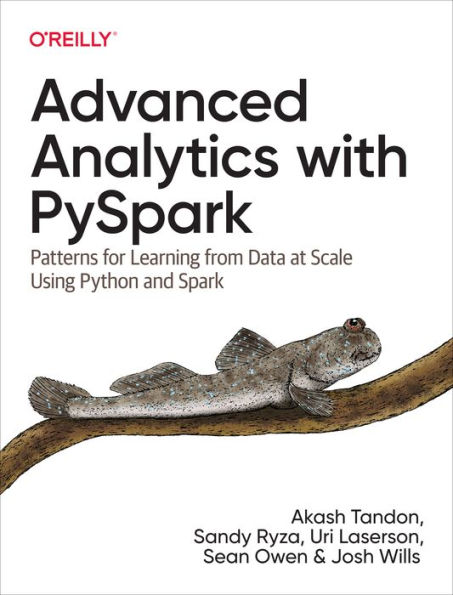Data scientists Akash Tandon, Sandy Ryza, Uri Laserson, Sean Owen, and Josh Wills offer an introduction to the Spark ecosystem, then dive into patterns that apply common techniques-including classification, clustering, collaborative filtering, and anomaly detection, to fields such as genomics, security, and finance. This updated edition also covers NLP and image processing.
If you have a basic understanding of machine learning and statistics and you program in Python, this book will get you started with large-scale data analysis.
- Familiarize yourself with Spark's programming model and ecosystem
- Learn general approaches in data science
- Examine complete implementations that analyze large public datasets
- Discover which machine learning tools make sense for particular problems
- Explore code that can be adapted to many uses
Data scientists Akash Tandon, Sandy Ryza, Uri Laserson, Sean Owen, and Josh Wills offer an introduction to the Spark ecosystem, then dive into patterns that apply common techniques-including classification, clustering, collaborative filtering, and anomaly detection, to fields such as genomics, security, and finance. This updated edition also covers NLP and image processing.
If you have a basic understanding of machine learning and statistics and you program in Python, this book will get you started with large-scale data analysis.
- Familiarize yourself with Spark's programming model and ecosystem
- Learn general approaches in data science
- Examine complete implementations that analyze large public datasets
- Discover which machine learning tools make sense for particular problems
- Explore code that can be adapted to many uses

Advanced Analytics with PySpark: Patterns for Learning from Data at Scale Using Python and Spark
233
Advanced Analytics with PySpark: Patterns for Learning from Data at Scale Using Python and Spark
233
Product Details
| ISBN-13: | 9781098103651 |
|---|---|
| Publisher: | O'Reilly Media, Incorporated |
| Publication date: | 07/19/2022 |
| Pages: | 233 |
| Product dimensions: | 7.00(w) x 9.19(h) x (d) |
